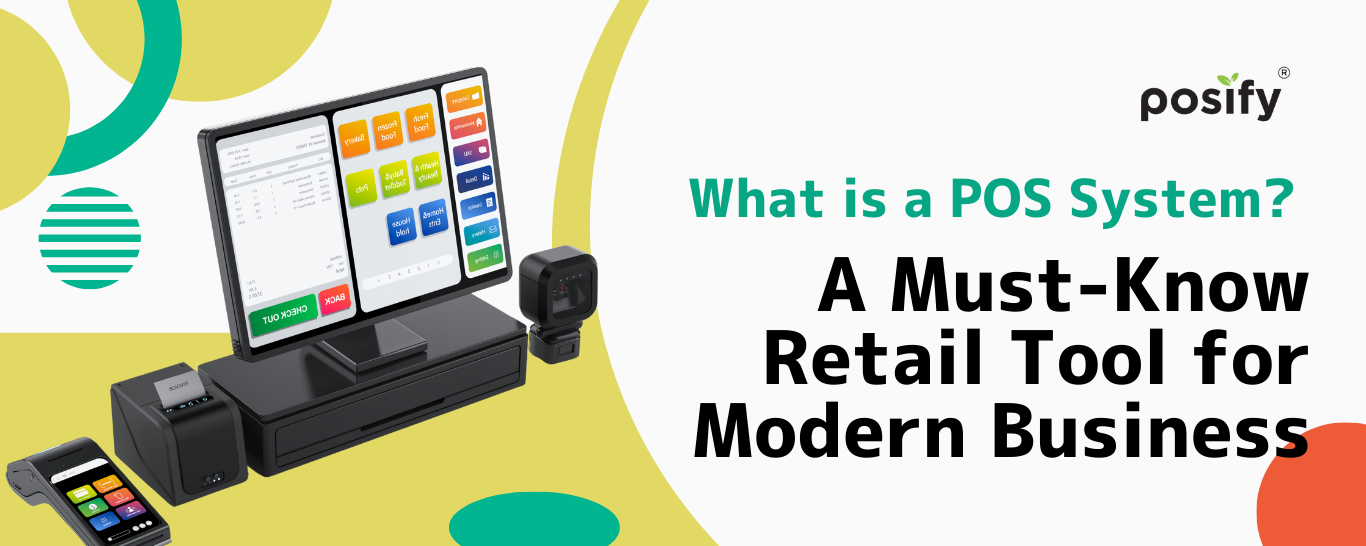What is a POS System? A Must-Know Retail Tool for Modern Business

In today’s fast-changing retail landscape, where customer expectations and buying habits are evolving, retailers face both challenges and opportunities. Whether you run a small convenience store, a trendy boutique, or a multi-location chain, improving transaction speed, inventory accuracy, and customer experience is critical. At the heart of this is the POS system.
Let’s dive into what a POS system is and how it helps retailers operate smarter and grow stronger.
What Is a POS System?
POS stands for “Point of Sale.” It’s the technology that manages sales transactions between a customer and a business. A POS system records purchases, processes payments, and tracks key details like sale amounts, quantities, and times.
Think of it as your store’s “brain” — it gathers and analyzes sales data, helping you monitor inventory, understand customer buying behavior, and make better business decisions.
Want to know more about how Posify can support your business? Chat with us now via WhatsApp!
Components of a POS System
1. Hardware
A complete POS system usually consists of the following two major parts:
Cash Register (POS Terminal)
The cash register is the core computing device of the POS system. It processes all transaction data, runs the POS software, and connects with other peripheral devices such as scanners and printers. It is designed for high stability and durability to support long hours of operation, ensuring smooth business activities. Some POS terminals come with built-in touchscreens, databases, operating systems, and communication functions, making them the control center of the entire POS setup.
Barcode Scanner
A barcode scanner is used to quickly scan the barcode of a product, instantly transmitting information such as product name, price, and inventory code to the POS system. This significantly improves checkout efficiency and reduces manual input errors. Depending on the usage environment, there are various types available—handheld, wired, wireless, or fixed scanners.
Touchscreen or Monitor
Touchscreens allow operators to interact with the POS system through an intuitive interface—selecting products, entering data, or adjusting settings. Monitors serve as the main visual output device, displaying transaction data, customer lists, and reports. Together, they form the primary user interface of the POS system.
Cash Counter/Cash Drawer
The cash drawer stores cash, coins, and change. It is usually connected to the POS system and opens automatically when a transaction is completed or when manually triggered. Cash counters assist in quickly counting banknotes, improving the efficiency of cash handling. These devices often feature security measures like key locks, password protection, and limited access settings.
Receipt Printer
The receipt printer is dedicated to printing transaction records such as customer receipts, invoices, transaction logs, or inventory slips. Common types include thermal and dot matrix printers. Depending on the industry needs, certain models can also print QR codes or promotional coupons.
Card Reader / Payment Terminal
Payment terminals support various payment methods, including credit cards, debit cards, mobile payments (e.g., Apple Pay, Google Pay), and QR code scanning. Modern POS systems typically integrate these devices to enable fast and secure cashless transactions, enhancing the overall customer payment experience.
Customer Display (Pole Display)
A customer display shows real-time transaction details to the customer, including item names, prices, totals, and change. It helps ensure transaction transparency and builds customer trust. Advanced models may also display promotional content or advertisements, enhancing marketing and customer engagement.
2. Software
The software of a POS (Point of Sale) system is the core of the entire sales process, responsible for integrating hardware devices and executing various business operations. Its basic functions include product management (such as adding, editing, and searching product information), transaction processing (quick checkout, discounts, returns and exchanges), inventory management (real-time stock updates and low-stock alerts), reporting and analytics (sales performance, top-selling items, employee performance), customer management (loyalty points, discounts, purchase history), and multi-payment integration (credit cards, mobile payments, cash, etc.). Modern POS software often features cloud synchronization, remote monitoring, and centralized management across multiple branches, greatly enhancing operational efficiency and management flexibility.
Five Benefits of Using a POS System
The five major benefits of using a POS system in retail include:
.png)
1. Increased Transaction Efficiency
A POS system significantly simplifies and speeds up the checkout process. By scanning barcodes or selecting from product lists, the system automatically calculates totals, discounts, and taxes, greatly reducing operation time. This improves the customer checkout experience, helps retailers maintain efficient service during peak times, reduces queue waiting, and enhances overall business efficiency and customer satisfaction.
2. Reduced Human Error
Traditional manual pricing and cash handling can lead to errors, unclear records, or incorrect change. A POS system standardizes procedures and automates calculations to prevent financial losses or customer disputes caused by human mistakes. Permission settings further prevent internal staff errors or misconduct, improving operational security and management efficiency.
3. Real-time Inventory Management and Alerts
POS systems update inventory instantly with every sale, avoiding manual errors. They also allow setting minimum stock levels to trigger automatic alerts when inventory runs low, prompting timely restocking. This helps maintain healthy stock levels, reducing risks of stockouts or excess inventory, easing financial pressure and minimizing loss from spoilage or obsolescence.
4. Multi-store Integration and Remote Management
For businesses with multiple branches, POS systems enable centralized management, allowing monitoring of sales, stock flow, and operational data across all locations. Many modern POS systems support cloud features, letting managers access information and adjust settings remotely, enabling flexible and timely business decisions.
5. Integration with External Platforms
Modern POS systems can integrate with e-commerce websites, delivery platforms, accounting systems, and more, syncing data and automating workflows. This reduces duplicate data entry, increases operational efficiency, and ensures consistency across various business processes.
Conclusion
As retail evolves, relying on manual cash registers or paper-based systems is no longer viable. A POS system is key to boosting efficiency, increasing sales, and building customer loyalty.
If you want an easy-to-use, powerful POS tailored for local businesses, Posify is your go-to solution. Whether single-store or chain, our cloud-based system lets you manage your business seamlessly across phones, tablets, and laptops—ready to help you tackle tomorrow’s challenges.






